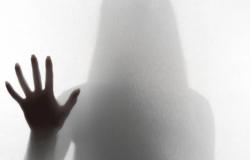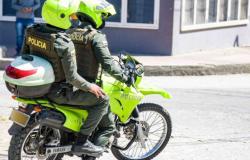Bebedó (“corn river”, in the Embera indigenous language) is a district of the municipality of Medio San Juan, located in the middle basin of the homonymous river in Chocó, with such valuable natural wealth, that its community does not hesitate to classify it as the new Nuquí.
The township has a material and intangible heritage whose cultural heritage comes mainly from the Afro-Colombian and indigenous population of the area.
For this reason, the Colombian Association of Sustainable Development and Industrial Ecology (ADSEI) requested ERM through the ERM Foundation, carry out a diagnosis on the potential of the area for community socio-ecological tourism, with sustainability criteria and a local participatory approach, around the El Salto waterfall (also known as El Encanto). The results are telling.
The Salto waterfall in Bebedó is impressive. It has two waterfalls: the first is divided into two jets that descend about 40 meters and join at the bottom in a small pool, which is entered through a staircase. From there, it falls to the lower part of the entire Salto in a jet of water. The Embera inhabitants say that “gold fish came out” from it and that its waters are medicinal.
Biodiversity is part of that great treasure that its residents talk about. In an initial search carried out by ERM, a large number of unique species were found: 18 endemic amphibians nationwide; 11 endemic reptiles at the national level and 3 regional and 2 endemic birds at the national level.
In birds, the presence of the Chocó oriole and the noanamá bobo stand out; In mammals, the Chocoana marimonda and the capuchin are already in a vulnerable situation. No less striking are the Chocó night monkey and the Chocó marmoset, which are classified as on the verge of threat.
Aware of the potential of the area, the community wants to develop nature tourism, focused on activities and services such as hiking, wildlife watching, traditional knowledge, physical infrastructure such as low-impact hospitality and training in sustainable development, environment and administration, among others. others.
Community work in Bebedó, Chocó.
Photo:Martha Penuela
This project would directly impact 450 peopleand indirectly to approximately 1,500.
“The objective is to convert traditional activities and abundant biodiversity into a showcase for tourists, displacing illicit economies such as drug trafficking and illegal mining. This would impact the pockets of the inhabitants of the township since many are in a vulnerable condition or are victims of the armed conflict,” said Martha Peñuela, Consulting Partner of ERM.
The Salto waterfall, in Bebedó
Photo:Martha Penuela
The initiative also aims to promote community training and empowerment so that the inhabitants of the area canThose who lead socio-ecotourism activities, through informal and formal education (in alliance with higher education institutions and SENA).
The purpose of the project is to contribute to alleviating local poverty and, at the same time, take advantage of and protect the environmental and ethnic-cultural heritage of the territory.
The ERM Foundation accompanied the diagnostic phase of the project and will support its execution, in line with the goals of the Kunming-Montreal Global Biodiversity Framework adopted at COP15.
“We believe that COP16 will be a great opportunity for Colombia to put communities at the center, as actors of biodiversity and to analyze progress in the country’s and world’s goals,” Peñuela explained.
Other initiatives
Colombia is the second most biodiverse country in the world. Not only Bebedó has ecotourism potential, but also the town of La Olga, in Yumbo, Valle del Cauca, in the Arroyohondo River basin.
There the community wants to promote nature tourism through an ecopark focused on activities and services such as hiking, bird watching, agroecology, butterfly farm, low-impact hospitality, scientific tourism and planting and management of aromatics.
Olga is known in Yumbo as a source of medicinal and organic aromatic plants.
There, ADSEI also relied on the ERM Foundation for the diagnosis, which in an initial search revealed the existence of 37 endemic amphibians nationwide and 2 from the Cauca Valley; 8 endemic reptiles nationally and 5 regionally; 8 endemic birds nationwide; and 6 endemic mammals at the national level.
In this area you can see the seven-colored hummingbird, the Andean rock cockerel, the red soche, the red howler, among other animals that provide fundamental ecosystem services for the La Elvira National Protective Forest Reserve, in whose territory the initiative would be developed.
TRAVEL EDITORIAL






